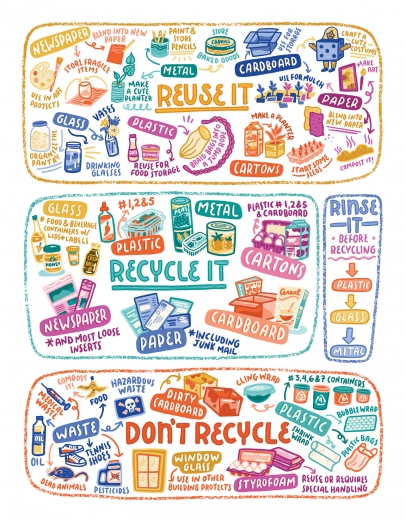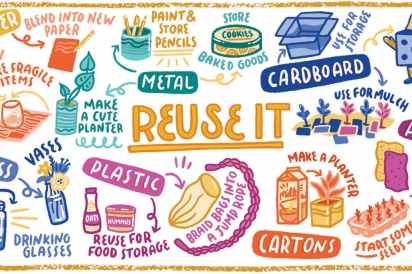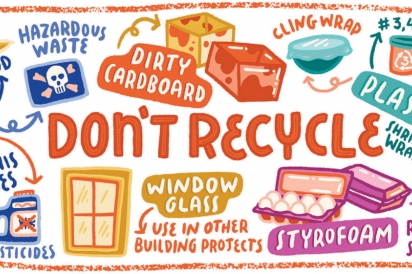To Recycle or To Not Recycle
You might get that warm fuzzy feeling that comes with doing good for the planet when you drop that plastic container into your designated recycling receptacle. But how much of what you proudly send off on trash day actually gets recycled?
And for that matter, what is actually recyclable? And what happens to all of that “recycling” once it leaves our homes?
THE BUSINESS OF RECYCLING
Recyclable items are considered an asset, an item that can be sold. Ideally, all those plastic and glass bottles, cardboard and cartons will be broken down to raw materials and used again to make other products that can be sold to consumers. Anything that can’t be sold will get thrown into the landfill. It’s just business.
RECYCLING PROCESS
When your recycling is picked up via truck, it is taken to a recycling center where it is poured onto large machines. These large machines carry the materials onto conveyor belts where workers sort out the materials specifically based on type, with a focus on whether items are clean or soiled. The clean recyclables sell at a better price to manufacturers looking for raw material.
According to an informational video by Gold Coast Recycling, “Often times, trash comes mixed in with recyclables, thus requiring an expensive rerouting to the landfill. That’s where you come in. Our goal is for all residents to put nothing but recyclables into the recycling containers …”
REUSING IS BETTER
The consensus seems to be that recycling is better than not recycling, But why not switch to using multi-use items that don’t need to be recycled or thrown out to begin with? Mason jars, multi-use plasticware, reusable zipper-lock silicon bags, stainless steel drinking straws and water bottles, beeswax-covered cloth to replace disposable sandwich bags, compostable paper products, a pocket set of bamboo eating utensils to replace the ones they give you with takeout food and a zillion other options are all good ways to reduce the amount of trash—and recyclables— that you might toss out. It’ll save on landfill space, and it’ll save on fossil fuels, and it’ll help save the planet a little.
In the end, recycling is a practice that should be a last resort. Before throwing an item into the recycling bin ask yourself: Can this be reused, upcycled or composted?
Ventura County has over half a dozen recycling centers to which county residents are assigned based on the city they live in.
Camarillo: Camarillo Recycling, Inc.
805-987-0226
Fillmore: Fillmore Recycling Center
805-265-0663
Oxnard: Del Norte Recycling Center
805-385-8060
Simi Valley:
Waste Management—Simi Valley Landfill
866-909-4458
Ventura: Gold Coast Recycling
805-642-9236
Ventura: Standard Industries
805-643-6669
Thousand Oaks: P C Recycle
805-499-0050
Best Practice Tip:
Rinse your recycling. Just do it. Each facility will have different guidelines about which dirty (and clean) containers they will accept, but it saves time and money if you just clean it at the source.
For information on recycling plastics by numbers, check with your local recycling facility.









